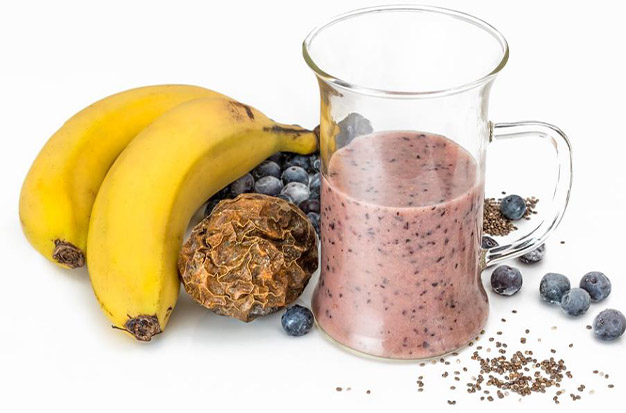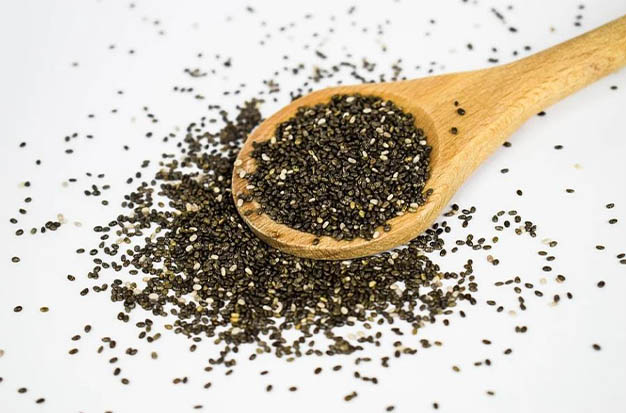Are chia seeds gluten-free?
The short answer is YES. Chia seed is an edible seed from the plant Salvia hispanica L., and was a staple food in the Considering the advantages to health, Aztec and Mayan diets. Its origin plant is from the mint family and is primarily grown in Mexico and Guatemala. It is referred to as one of the “superfoods” in the nutrition world. Although it offers a host of advantages for leading a healthy lifestyle, is this chia seed gluten-free?
Table of Contents
What Are Chia Seeds?
The chia plant (Salvia Hispanica) produces tiny seeds that are known as chia seeds. Chia seeds are categorized as a pseudocereal because they do not belong to the Poaceae family of grasses but do share some of their nutritional and culinary properties with those that do. Chia seeds, like their nearest pseudocereal sibling, amaranth, are indigenous to Mexico and Central America, where the Mayans domesticated them and made them a staple food.
Chia seeds are protein powerhouses, just like the other pseudocereals. They are a great plant-based protein and a great source of their eponymous strength because they contain the nine essential amino acids our body needs to function properly. However, where they diverge is in their extraordinarily high omega-3 content and the fact that more than 80% of their carbohydrates come from dietary fiber. As a result, these tiny seeds are among the foods that are highest in nutrients when compared calorie for calorie.
What Is Gluten?
Most wheat products contain a protein called gluten, which serves as a sort of “glue” to keep grains like wheat, barley, kamut, spelt, farro, durum, bulgur, rye, and semolina from crumbling and from losing their shape.
Due to its natural occurrence, gluten cannot be removed from grains. There is no way to make a food gluten-free if the grain already contains gluten.
Some food items contain gluten, which can be found in wheat, wheat flour, malt flavor, or malted barley.
Are Chia Seeds Gluten-Free?
One type of “true cereal grain,” such as wheat, barley, and rye, contains a protein called gluten. Chia seeds are completely free of gluten because they are not “true cereals,” but rather pseudocereals. Because of this, people with coeliac disease, gluten intolerance, or non-coeliac gluten sensitivity can also benefit from all the health advantages chia seeds have to offer.
Where Are Chia Seeds Grown?
According to Britannica, chia seeds are currently grown in countries with warmer climates, such as Mexico, Argentina, Australia, Bolivia, Peru, and some regions of the United States. However, they were originally used by indigenous cultures in Mexico and Guatemala before being domesticated and made available everywhere.
The Appearance And Flavor Of Chia Seeds
Chia seeds are tiny, 2 mm or less long, oval-shaped beads with a smooth, shiny exterior. They can be either black or white, but never brown, as brown seeds are not fully ripe and do not, therefore, contain all of chia’s nutritional advantages.
Chia seeds are highly absorbent because they are hydrophilic. When submerged in liquid, a clear jelly surrounds them, giving them a frogspawn-like appearance. But don’t let that turn you off because chia in this form is very hydrating and serves vital culinary purposes for binding and thickening; see below.
Since chia seeds have no flavor, they can be added to anything and everything, which is one of their best qualities.

Benefits Of Chia Seeds
Just 1 ounce of chia seeds has the following nutritional value:
- 4.7 grams of protein
- 5 grams of Alpha-linolenic acid (ALA)
- 9.8 grams of fiber
- 14% of the daily value (DV) of calcium
- 12% of the DV of iron
- 23% of the DV of magnesium
- 20% of the DV of phosphorus
- 12% of the DV of zinc
- 15% of the DV of thiamine (Vitamin B1)
- 16% of the DV of niacin (Vitamin B3)
Omega-3 fatty acids are most abundant in plants in chia seeds. These fatty acids have been shown to have a positive effect in circulatory health, by lowering cholesterol, regulating blood pressure, and decreasing inflammation.
The high fiber and protein content in chia seeds can aid in weight loss. Chia seeds contain 35% of their weight in fiber thanks to their 10 grams of fiber per ounce, or 1 ounce of chia seeds. This fiber absorbs water and turns into a gel-like substance because it is soluble. As a result of this expanding in your stomach, you may feel fuller after eating. The protein works in a similar manner, making you feel more satisfied after eating and causing you to eat less.
Calcium, phosphorus, and magnesium all play a vital role in bone health. Studies have shown that consuming these minerals can help keep your bones strong because chia seeds contain high concentrations of all of them in small servings.
Chia seeds are also a great source of antioxidants, those molecules which fight against the free radicals in your body. Cancer and other cell damage can result from a buildup of these free radicals in your body.
How Can Chia Seeds Be Used?
Chia seeds can be used in baking and cooking in a variety of ways. Using chia seeds in your diet can be done in a number of ways, but these are just a few.
- Chia gel can be used as an egg substitute in baked goods
- Chia seeds can make a delicious chia pudding for breakfast, snack, or dessert
- Chia seeds can be added to water or juice for a hydrating beverage
- Chia seeds can be added to smoothies for extra protein and fiber
- Chia seeds or chia flour (ground chia seeds) can be added to soups or stews as a thickening agent
- Chia seeds or chia flour can be added to sauces, marinades, and salad dressings as a thickening agent
- Chia seeds can be used in pancakes, waffles, breads, and muffins as an egg substitute and increase fiber
- Chia seeds can be added to smoothie bowls or dairy-free yogurt bowls for extra nutritional benefits – or in gluten-free granola
- Chia seeds can be added to plant-based gluten and dairy-free protein powders or homemade protein mix-ins for smoothies or dairy-free protein shakes
- Chia seeds are used as an ingredient in gluten-free wraps
Do Chia Seeds Contain Any Dairy?
Chia seeds are a dairy-free ingredient that are safe to consume if you are avoiding dairy products in your diet because they aren’t made from animal milk.
Brands Of Gluten-free Chia Seeds
Since chia seeds are naturally gluten-free, it should go without saying that most brands are suitable for your gluten-free diet. To give you a head start on what to look for, I always like to include a brief list of a few brands you can be on the lookout for in blog posts.
You can look for these brands of chia seeds at your neighborhood grocery store or purchase them online from merchants like Thrive Market or Amazon.
All of the brands that are available here have gluten-free labels, letting us know that the producer takes gluten contamination seriously and has taken the time to test all of their products for it.
- Anthony’s
- Betterbody Foods
- Bob’s Red Mill
- Carrington Farms
- Food to Live
- Healthworks
- Nature’s Intent
- Nativas
- NOW Foods
- Nutiva
- Simple Truth
- Spectrum Essentials
- Trader Joe’s
- Viva Naturals
What To Eat Chia Seeds With And How To Cook Them?
Here’s another benefit associated with chia seeds, as if there weren’t already enough: chia seeds can be eaten raw. This indicates that eating chia seeds requires no preparation time; all the nutritional benefits of this pseudocereal superfood can be obtained simply by opening the bag and sprinkling them over whatever is in front of you. Add a tablespoon of chia seeds to your morning cereal, sprinkle some on salads, add them to smoothies, or fold them into the batter for bread and cakes.
In vegan baked goods, you can replace one egg with chia seeds by combining one tablespoon of chia seeds with three tablespoons of warm water. Prior to using, allow the mixture to sit and gel for about five minutes.
Iskiate, also known as chia fresca, is a natural energy drink popular among the Tarahumara people. To make it, mix 1-2 tablespoons of chia seeds with 500 ml of water, some freshly squeezed lime juice, and your preferred sweetener. Give it a good stir after five minutes and then set it aside again for as long as you like. Although we can’t promise you’ll be able to run 100 miles after drinking it, we can promise you’ll feel refreshed and energized for a while.

Conclusion
Undoubtedly a superfood, chia seeds. These foods can make a wonderful addition to any gluten-free diet because they have so many health advantages. Try one of the alternative seeds listed here if you dislike chia seeds for any reason, including the need to prepare them before eating or the taste. Happy health to you, everyone!
You may also be interested in:
- Are Lays Chips Gluten-Free?
- Is Kix Cereal Gluten-Free?
- Are Klondike Bars Gluten-Free?
- Are Butterfingers Gluten Free?
- Are Jelly Beans Gluten-Free?
- Are Fritos Gluten Free?
- Are Dippin’ Dots Gluten-Free?
- Are Chickpeas Gluten Free?
- Are Black Beans Gluten-Free?
- Are Goldfish Gluten-Free?
- Are Bananas Gluten-Free? Do Bananas Have Gluten?

